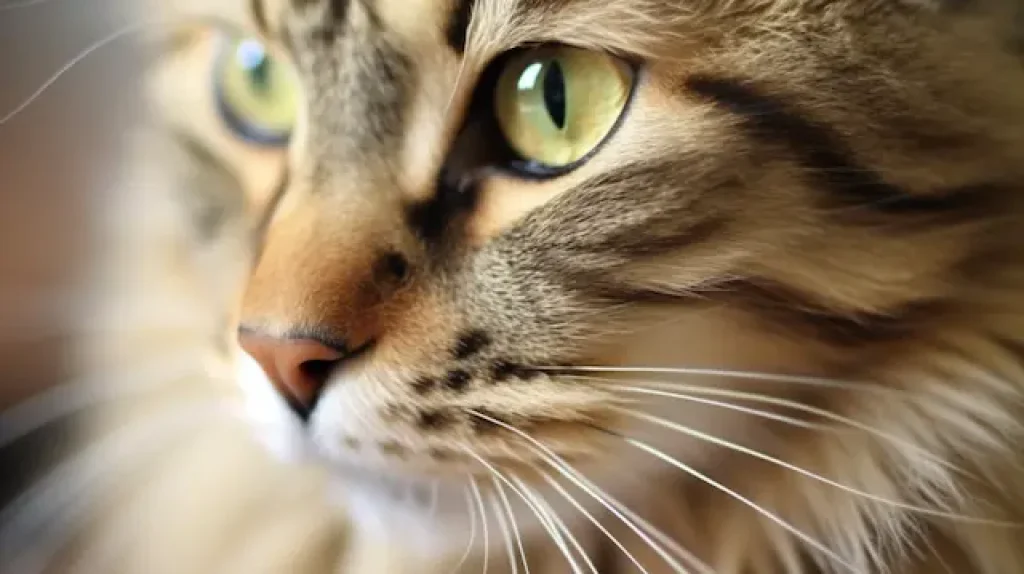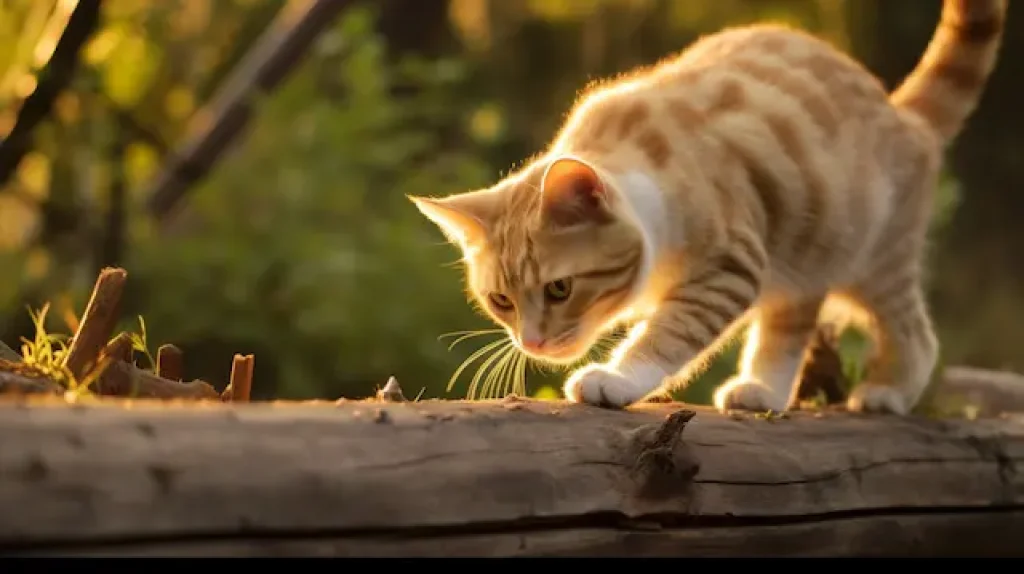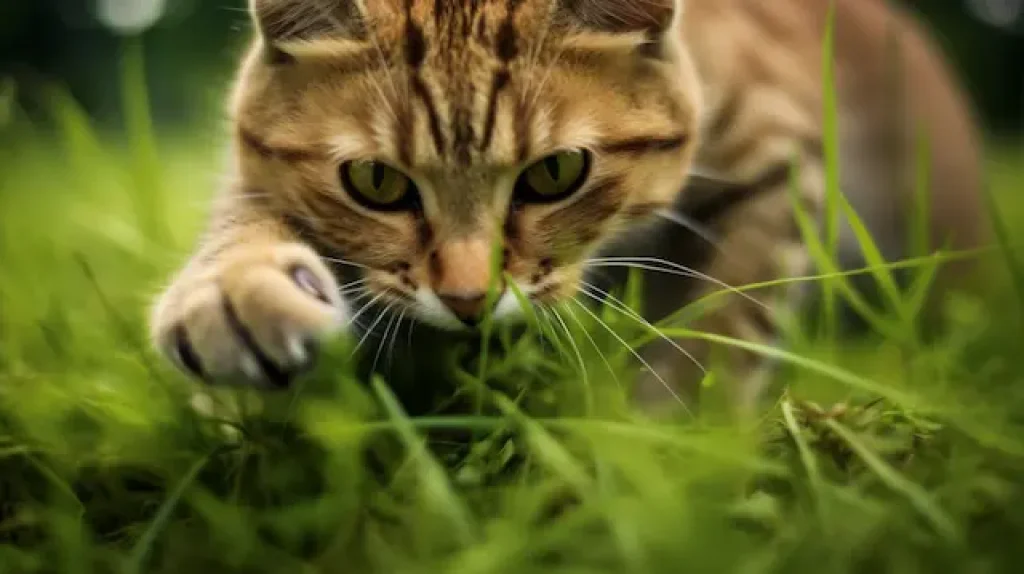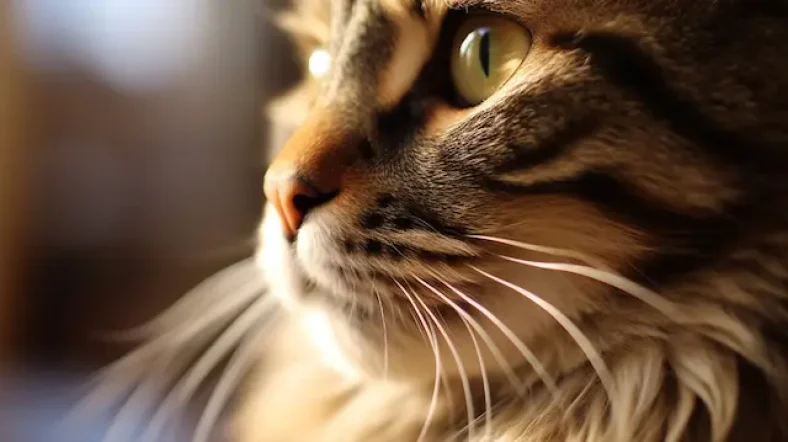When you think of a cat, one of the first things that come to mind is their majestic whiskers. But did you know that cat whiskers are more than just facial hair? These long, delicate hairs called vibrissae play a crucial role in a cat’s daily life and overall well-being.
Cat whiskers are not just for decoration – they serve as a vital sensory tool for our feline friends. Whiskers are connected to nerve cells that allow cats to gather information about the world around them.
They act as sensory organs, detecting subtle changes in the environment such as air currents and vibrations. This specialized sense is known as proprioception, which helps cats assess their surroundings and navigate with precision.
In this blog post, we will delve into the fascinating world of cat whiskers, exploring their function, the causes of whisker breakage, and the impact it can have on a cat’s behavior and quality of life.
We will also touch on how to recognize broken whiskers, when to seek veterinary care, and ways to promote whisker health. So let’s dive in and learn more about these remarkable sensory tools that are not just a defining feature of our feline companions, but also crucial to their well-being.
Contents
Cat Whiskers 101: Understanding Their Function and Importance
Cat whiskers, also known as tactile hairs or vibrissae, are specialized sensory organs that protrude from a cat’s face. While we commonly associate whiskers with the areas around a cat’s mouth, they can also be found on their cheeks, above their eyes, and even on the back of their front legs.
Anatomy and positioning of whiskers on a cat
Whiskers are much thicker and stiffer than regular fur and are deeply rooted in the hair follicles.
These follicles are surrounded by sensitive nerve endings, making whiskers highly receptive to even the slightest touch or movement. Typically, cats have a set of 24 whiskers on their face, arranged in four rows on each side.
The critical role of whiskers in a cat’s sensory perception
The primary function of cat whiskers is to provide information about the cat’s surroundings.
They act as specialized receptors, enabling the cat to detect movement, navigate through narrow spaces, and gauge the size of objects in their environment. The length of a cat’s whiskers is generally equivalent to the width of their body, serving as an essential navigational tool.
Furthermore, whiskers serve as a form of communication for cats. When a cat is feeling confident and content, their whiskers are usually relaxed and spread out. Conversely, if they feel threatened or agitated, their whiskers may flatten against their face, indicating their discomfort to others.
Cat whiskers are an essential sensory tool that helps cats interact with and understand their environment. They provide vital information about distances, objects, and the movements of prey or predators, contributing to the overall well-being and daily functioning of our feline companions.
Causes of Whisker Breakage in Cats: Why Do Cat Whiskers Break?
Just like any other part of the body, cat whiskers can sometimes break due to accidents and physical trauma.

Cats are curious and agile creatures, often exploring tight spaces and encountering objects that can cause their whiskers to get caught or bent. Common accidents include getting their whiskers caught in doors, sticking their heads into narrow openings, or getting tangled in wire or string.
The impact of poor nutrition on whisker health
A cat’s overall health, including the health of their whiskers, can be affected by their diet. Poor nutrition can result in brittle and weak whiskers, making them more prone to breakage.
Cats require a balanced diet that includes essential nutrients, vitamins, and minerals to maintain the strength of their whiskers and promote overall hair health.
How certain diseases can cause a cat’s whiskers to break
Certain underlying medical conditions can contribute to whisker breakage in cats. Conditions such as ringworm, allergies, or hormonal imbalances can affect the health and integrity of a cat’s hair, including their whiskers. It is essential to be vigilant about your cat’s overall health and seek veterinary care if you suspect an underlying condition may be causing whisker breakage.
Stress-induced whisker breakage
Stress can have a detrimental impact on a cat’s well-being, including their whiskers. Cats may exhibit stress-induced behaviors like excessive grooming or rubbing their faces against surfaces, which can lead to the breakage of their whiskers.
Understanding and addressing the underlying causes of stress in your cat’s environment can help prevent further whisker breakage.
Connection between poor grooming and broken whiskers
Cats are meticulous groomers, and their grooming routine serves multiple purposes, including the maintenance of their whiskers.
However, if a cat’s grooming habits are compromised due to illness, pain, or mobility issues, their whiskers may become neglected and prone to breakage. Regular grooming and monitoring your cat’s health can help prevent this issue.
Is it normal for a cat’s whiskers to fall out?
It is not common for a cat’s whiskers to fall out naturally. Whiskers generally have a longer lifespan than regular fur and will shed naturally only when they reach the end of their growth cycle. If you notice that your cat is losing whiskers frequently or experiencing significant whisker loss, it is important to investigate the underlying cause and consult with a veterinarian.
Understanding the various factors that can contribute to whisker breakage in cats is crucial for maintaining their whisker health and overall well-being. By addressing these causes and taking proactive measures, you can help ensure that your cat’s whiskers stay strong and intact.
Recognizing Broken Cat Whiskers: Symptoms and Signs
Identifying visible signs of whisker breakage
Detecting broken cat whiskers can be challenging, as the breakage may not always be visible to the naked eye. However, there are certain signs that can indicate whisker breakage.
Look for any protruding or jagged ends on the whiskers or a noticeable length difference between the whiskers on each side of the face. Take note of any changes in the appearance or condition of your cat’s whiskers during regular grooming sessions.
How broken whiskers affect a cat’s navigation skills

Cat whiskers are not just aesthetic features but serve a crucial purpose in a cat’s spatial perception. When a cat’s whiskers are broken or damaged, they may experience difficulties navigating through narrow spaces or accurately judging distances. They may become more cautious or hesitant in their movements, demonstrating a loss of their usual agility and coordination.
Changes in eating patterns: Is whisker fatigue to blame?
Whisker fatigue, also known as whisker stress, is a condition that can occur when a cat’s whiskers are constantly stimulated during activities like eating from a deep bowl.
This overstimulation can cause discomfort and may manifest in changes in eating behavior, such as a reluctance to eat from certain bowls or food avoidance altogether. While not directly related to broken whiskers, whisker fatigue can still impact a cat’s overall whisker health and well-being.
Detecting disorientation: A sign of broken whiskers
Disorientation and confusion may arise when a cat’s whiskers are broken or damaged. Whiskers provide cats with vital sensory information about their surroundings, and any compromise in their ability to perceive their environment accurately can cause disorientation. Keep an eye out for signs of your cat appearing disoriented, bumping into objects, or being hesitant to explore new areas.
Behavioral changes linked to broken whiskers
Broken whiskers can also affect a cat’s behavior in various ways. Some cats may become more guarded or anxious, displaying signs of stress or discomfort.
Broken whiskers can impact a cat’s social interactions, potentially leading to aggression or withdrawal. It is important to observe any changes in your cat’s behavior and seek veterinary advice if these changes persist or worsen.
Excessive face scratching: A clue to whisker damage
If you notice your cat excessively scratching or rubbing their face, it could be a clue that they are experiencing discomfort due to broken whiskers.
This behavior may indicate irritation or itchiness associated with damaged or broken whiskers. Monitor your cat’s grooming habits and take note of any excessive face scratching, as it could be a sign of whisker damage.
Being able to recognize the symptoms and signs of broken cat whiskers is crucial for addressing any potential issues promptly. By observing changes in behavior, grooming habits, and overall well-being, you can ensure that your cat’s whiskers receive the attention and care they need.
The Impact of Broken Whiskers on a Cat’s Behavior and Life Quality
Broken whiskers and impaired spatial awareness
One of the primary functions of cat whiskers is to provide spatial awareness and aid in accurate navigation. When a cat’s whiskers are broken, their ability to gauge distances and navigate through tight spaces can be compromised.
This can lead to increased caution, hesitation, and potential accidents or injuries. Broken whiskers may impact a cat’s overall confidence in their movements, resulting in a decrease in their quality of life.
How broken whiskers can hurt cats by affecting their hunting and play

Cats are natural hunters and rely on their whiskers to accurately gauge the size and location of their prey. When a cat’s whiskers are broken, this precision is disrupted, potentially impacting their hunting skills.
Whiskers play a vital role in play behavior, allowing cats to judge distances and interact with toys and objects. Broken whiskers may hinder a cat’s ability to engage in these activities, leading to frustration and decreased enjoyment.
Social implications of whisker breakage in cats
Cats use their whiskers not only for personal navigation but also for social interactions. Whisker contact, also known as “whisker greetings,” is a common form of communication among cats.
When two cats approach each other, they may engage in a gentle touch of whiskers, signaling non-aggression and a desire to engage socially. Broken whiskers can make these interactions more challenging and may disrupt the social dynamics between cats.
Overall, broken whiskers can have a significant impact on a cat’s behavior and quality of life. Their impaired spatial awareness, diminished hunting skills, and limited social interactions can result in reduced confidence and overall well-being. It is essential to take steps to address broken whiskers and support a cat’s recovery to help them regain their natural abilities and enjoy a fulfilling life.
When to Visit the Vet: Identifying Serious Whisker-Related Problems
When should whisker breakage be a cause for concern?
While occasional whisker breakage is relatively common and may not raise immediate concerns, there are situations in which whisker-related problems warrant a visit to the veterinarian.
If your cat experiences frequent or severe whisker breakage, accompanied by other concerning symptoms such as changes in appetite, weight loss, lethargy, or skin abnormalities, it is advisable to seek veterinary attention.
A professional examination can help determine the underlying cause and ensure appropriate treatment if necessary.
Additional health concerns that might accompany broken whiskers
In some cases, broken whiskers may be indicative of underlying health issues beyond the whiskers themselves.
Cats may experience conditions such as ringworm, allergies, or nutritional deficiencies, which can affect the quality and strength of their whiskers.
Concurrent symptoms like excessive shedding, skin irritations, digestive issues, or overall poor health should be evaluated by a veterinarian to address any potential underlying health concerns.
The preventative power of regular veterinary check-ups
Regular veterinary check-ups are crucial for maintaining your cat’s overall health, including the health of their whiskers.
During these check-ups, your veterinarian can perform a thorough examination, assess the condition of your cat’s whiskers, and identify any potential problems or underlying health issues.
By maintaining a proactive approach to your cat’s well-being, you can catch any whisker-related issues early and take appropriate measures to ensure their recovery and prevent further complications.
Whisker-related problems can sometimes be an indication of more significant health concerns.
By staying vigilant and seeking timely veterinary care, cat owners can ensure the overall health and well-being of their furry companions. Remember, a veterinarian is the best resource to assess and address any concerns related to your cat’s whiskers and overall health.
Helping Your Cat’s Whiskers Grow Back: Treatments and Preventative Measures
Ensuring proper nutrition for whisker growth
Proper nutrition plays a vital role in promoting the growth and health of your cat’s whiskers. Ensure that your cat’s diet includes essential nutrients, vitamins, and minerals necessary for maintaining strong and resilient whiskers.
Consult with your veterinarian to determine the best diet for your cat’s specific needs to support optimal whisker health.
Creating a safe environment to prevent whiskers from breaking
Preventing whisker breakage starts with creating a safe environment for your cat. Clear potential hazards from your cat’s surroundings, such as tight spaces or objects that could potentially snag or bend their whiskers.
Provide ample space for your cat to move around and explore without risking damage to their delicate whiskers.
Implementing grooming routines to help whiskers grow back
Regular grooming can promote the growth of new whiskers in cats. Gently brush your cat’s fur, being cautious around the whisker area.
Brushing helps distribute the natural oils in their skin and maintain healthy hair follicles, supporting strong whisker growth.
Removing any debris or dirt that could accumulate around the whiskers can help prevent breakage.
Stress management for cats: Can it prevent whisker breakage?
Stress can contribute to whisker breakage in cats. Implementing stress management techniques, such as providing a calm and enriched environment, interactive play sessions, and designated quiet spaces for your cat to relax, can help reduce stress levels.
Addressing and minimizing sources of stress in your cat’s environment can contribute to overall well-being and may help prevent whisker breakage.
Supporting the growth and recovery of broken whiskers in cats requires a holistic approach that encompasses proper nutrition, a safe environment, grooming routines, and stress management.
By taking these preventative measures, you can assist in the regrowth of your cat’s whiskers and help maintain their whisker health in the long run.
Final Thoughts
As responsible cat owners, it is crucial to pay close attention to your cat’s whiskers and monitor for any signs of breakage, damage, or loss.
Regular grooming sessions and observation during everyday interactions can help you spot any abnormalities. By being diligent in your observation, you can address potential issues promptly and provide necessary care for your cat’s whisker health.
Remember, never trim your cat’s whiskers, as it can disrupt their sensory abilities and cause distress.
Provide a safe environment, a balanced diet, and regular veterinary check-ups to support your cat’s whisker health. If you notice frequent or severe whisker breakage, or if your cat exhibits other concerning symptoms, seek veterinary advice.
Whiskers are not just a physical feature but a fundamental aspect of a cat’s sensory perception and social interaction. So let’s give our feline companions the attention and care they deserve, ensuring that their whiskers remain healthy and intact for a long and fulfilling life.

